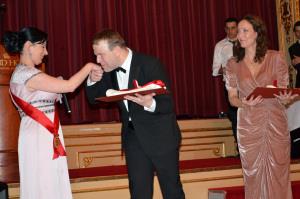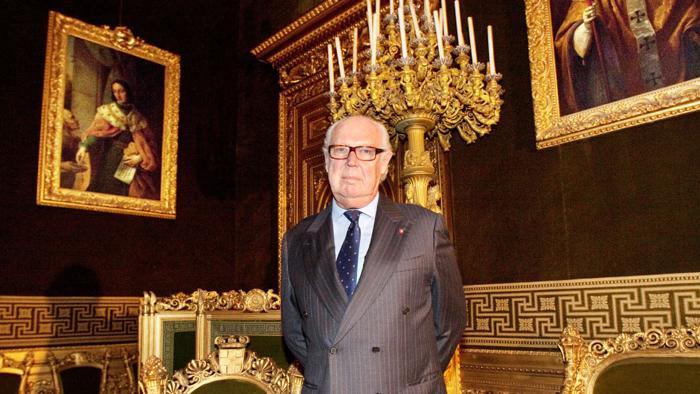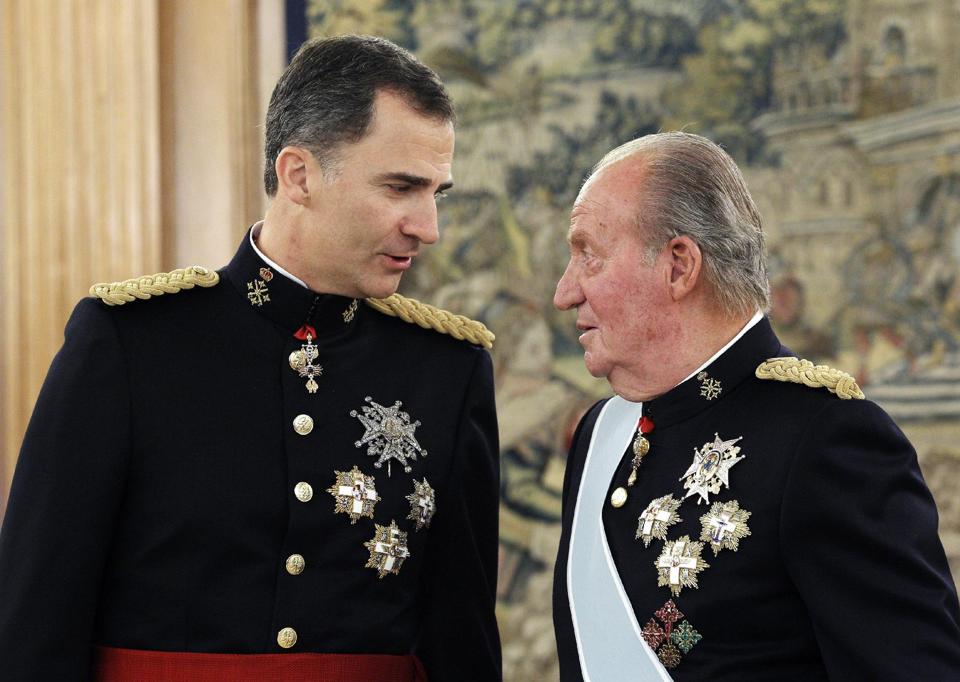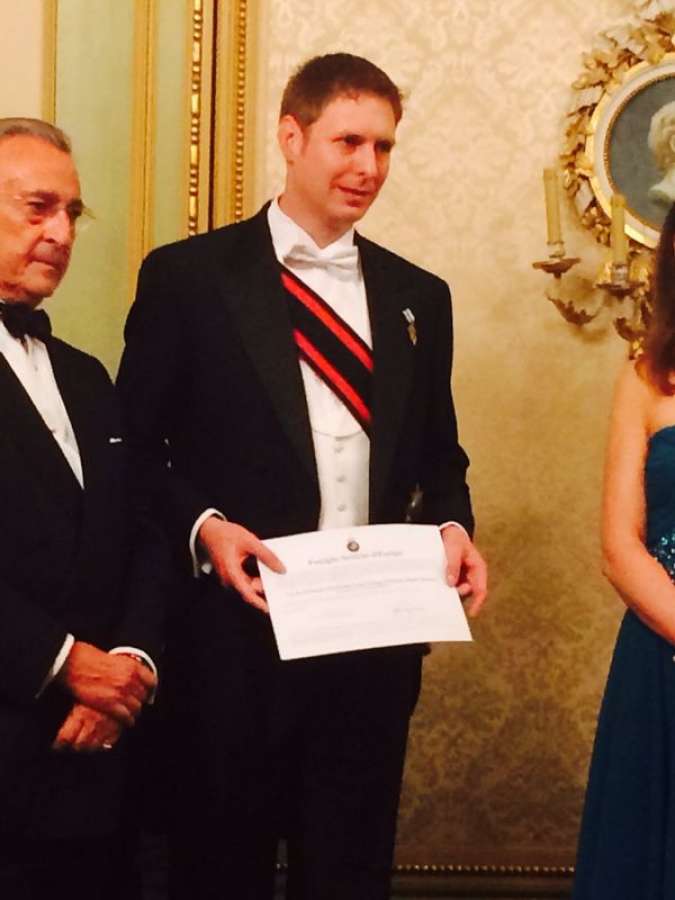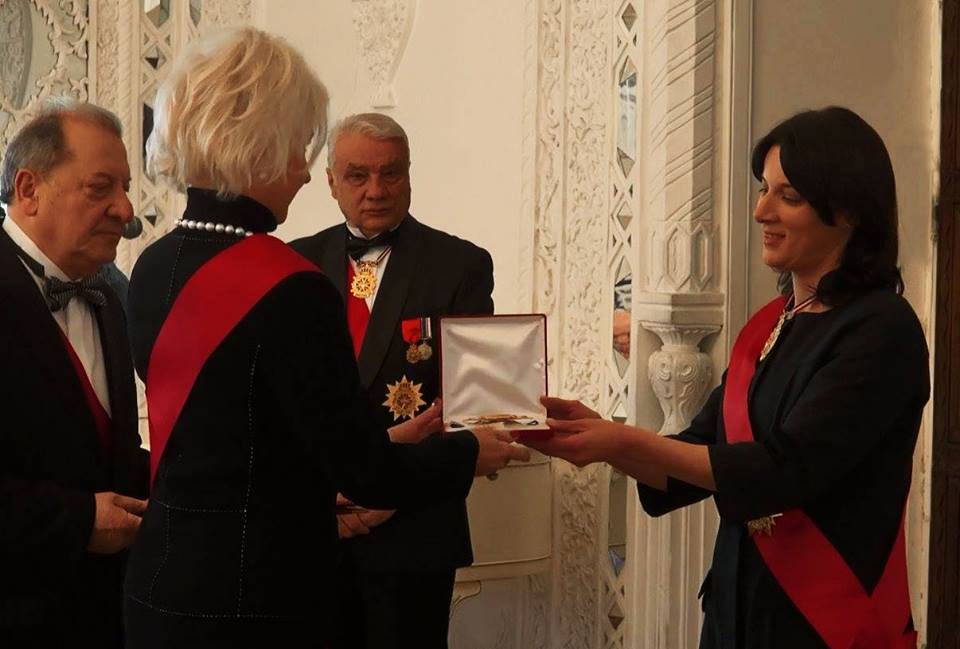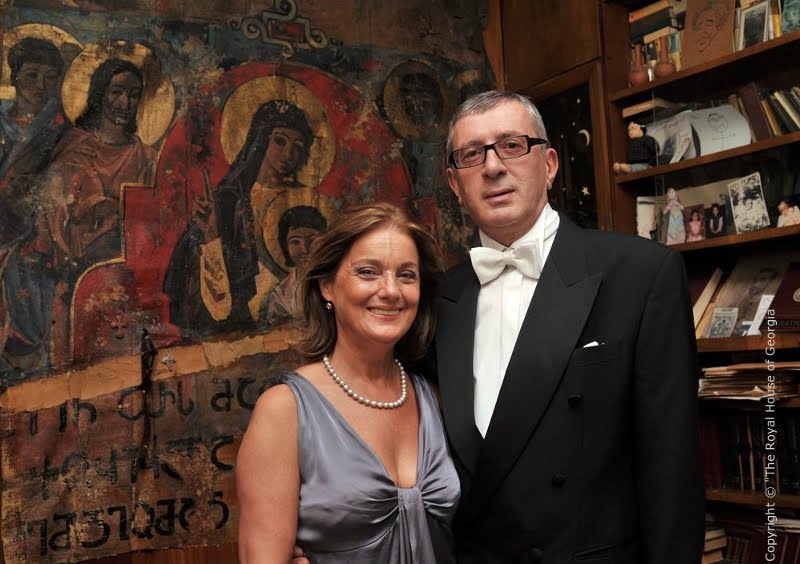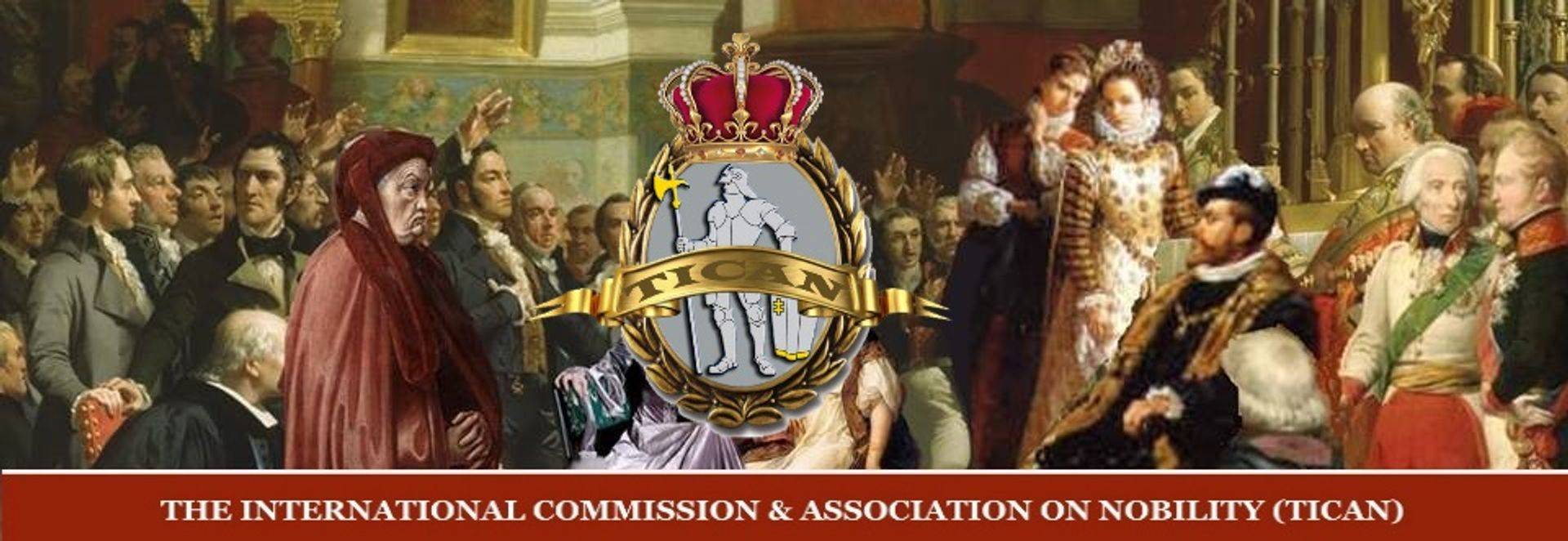
Title
DNA - ARE YOU DESCENDED FROM ROYALTY?
DNA EXPLAINED IN EASY TERMS
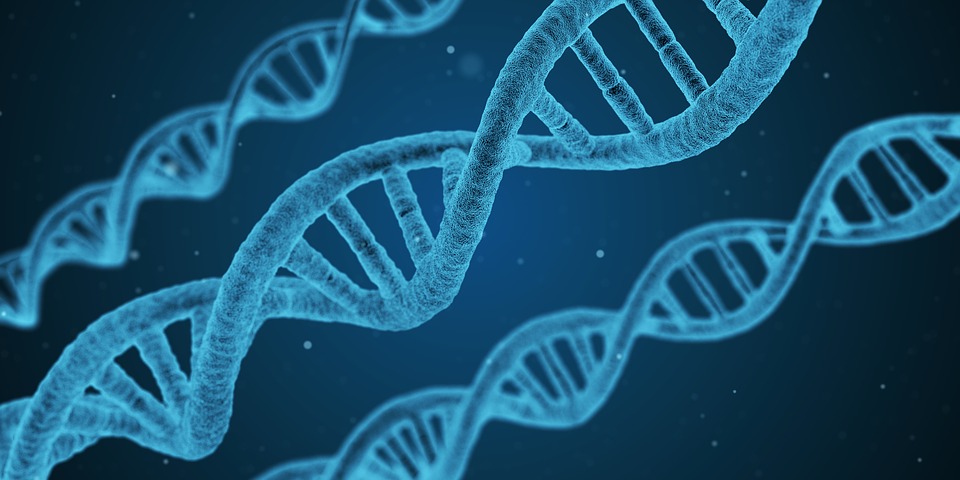
DNA was first isolated by Friedrich Miescher in 1869. Its molecular structure was first identified by James Watson and Francis Crick at the Cavendish Laboratory within the University of Cambridge in 1953, whose model-building efforts were guided by X-ray diffraction data acquired by Raymond Gosling, who was a post-graduate student of Rosalind Franklin. DNA is used by researchers as a molecular tool to explore physical laws and theories, such as the ergodic theorem and the theory of elasticity. The unique material properties of DNA have made it an attractive molecule for material scientists and engineers interested in micro- and nano-fabrication. Among notable advances in this field are DNA origami and DNA-based hybrid materials
DNA is material that governs inheritance of eye color, hair color, stature, bone density and many other human and animal traits. DNA is a long, but narrow string-like object. A one-foot long string or strand of DNA is normally packed into a space roughly equal to a cube 1/millionth of an inch on a side. This is possible only because DNA is a very thin string.
Our body's cells each contain a complete sample of our DNA. One cell is roughly equal in size to the cube described in the previous paragraph. There are muscle cells, brain cells, liver cells, blood cells, sperm cells and others. Basically, every part of the body is made up of these tiny cells and each contains a sample or complement of DNA identical to that of every other cell within a given person. There are a few exceptions. For example, our red blood cells lack DNA. Blood itself can be typed because of the DNA contained in our white blood cells.
Not only does the human body rely on DNA but so do most living things include plants, animals and bacteria.
A strand of DNA is made up of tiny building-blocks. There are only four, different basic building-blocks. Scientists usually refer to these using four letters, A, T, G, and C. These four letters are short nicknames for more complicated building-block chemical names, but the letters (A, T, G and C) are used much more commonly than the chemical names so the latter will not be mentioned here. Another term for DNA's building blocks is the term, "bases." A, T, G and C are bases.
For example, to refer to a piece of DNA, we might write: AATTGCCTTTTAAAAA. This is a perfectly acceptable way of describing a piece of DNA. Someone with a machine called a DNA synthesizer could synthesize the same piece of DNA from the information AATTGCCTTTTAAAAA alone.
The sequence of bases (letters) can code for many properties of the body's cells. The cells can read this code. Some DNA sequences encode important information for the cell. Such DNA is called, not surprisingly, "coding DNA." Our cells also contain much DNA that doesn't encode anything that we know about. If the DNA doesn't encode anything, it is called non-coding DNA or sometimes, "junk DNA."
The DNA code, or genetic code as it is called, is passed through the sperm and egg to the offspring. A single sperm cell contains about three billion bases consisting of A, T, G and C that follow each other in a well-defined sequence along the strand of DNA. Each egg cell also contains three billion bases arranged in a well-defined sequence very similar, but not identical to the sperm.
Both coding and non-coding DNAs may vary from one individual to another. These DNA variations can be used to identify people or at least distinguish one person from another.
DON´T GET TOO EXCITED IF A DNA TEST SAYS YOU HAVE ROYAL ANCENSTORS
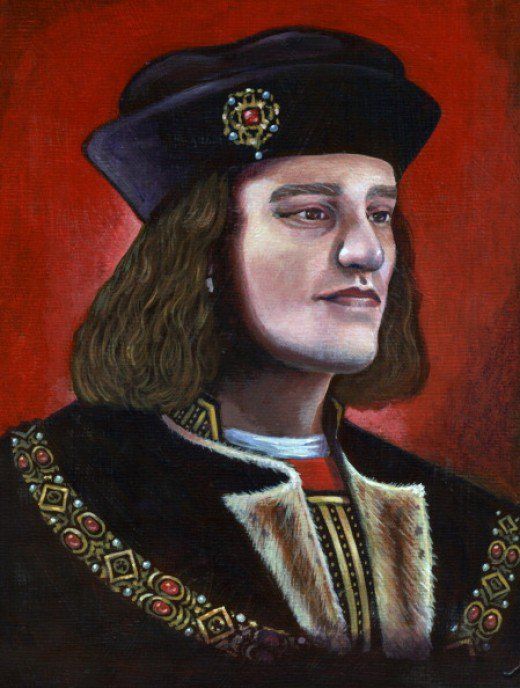
The mathematical study of genealogy indicates that everyone in the world is descended from Nefertiti, Confucius, and everyone of European ancestry is descended from Muhammad and Charlemagne
The history of European nobility is well known. Chances are, you have at least one ancestor who connects to the various Dukes, barons, Counts, and Knights and their spouses in medieval times. A large percentage of the nobility of the European nobility can claim descent from Charlemagne, who was crowned Emperor on December 25, 800. He had 20 children. No matter where your ancestors are from they probably share a common ancestor with everyone else from that region. What's surprising is that many of those common ancestors lived only 1200 years ago.
Because of the way the DNA deck is shuffled every time a sperm or egg is made, it doesn?t keep halving perfectly as you meander up through your family tree. If you?re fully outbred (which you aren?t), you should have 256 great-great-great-great-great-great grandparents. But their genetic contribution to you is not equal. Before long, you will find ancestors from whom you bear no DNA. They are your family, your blood, but their genes have been diluted out of your bloodline. Even though you are directly descended from Charlemagne, you may well carry none of his DNA.
Everyone alive in the ninth century who left descendants is the ancestor of every living European today, including Charlemagne. Europeans alive today are probably related to the long-dead Holy Roman Emperor even if their DNA test doesn?t show it.
Lots of kings and queens of centuries past had many children. These children married into noble families. As the centuries wore on, only the older children of these royal children and grandchildren would marry into the top noble families. The younger ones would marry minor nobles, knights, or commoner heiresses. Eventually, some lines of a royal family married down so much that they were no longer royal at all. This does not mean the descendants of the kings and queens of old do not have royal blood flowing through their veins to this day.
There were often just as many or more illegitimate royal offspring than legitimate ones. Some kings even made their illegitimate children their heirs when they did not procure any legitimate ones. King Henry VIII of England and his mistress, Elizabeth Blount, famously considered this with his illegitimate son, Henry FitzRoy (1st Duke of Richmond and Somerset (15 June 1519 ? 23 July 1536), before his first and only legitimate son, Edward VI (12 October 1537 ? 6 July 1553) was born who was King of England and Ireland from 28 January 1547 until his death.
The 13 monarchs who reigned between 1066 and 1485 fathered at least 40 bastards between them. Henry II leads the field with around 20. Descendants of Edward III, legitimate or otherwise, are believed to be more than 4 million. Some experts believe that practically everyone alive with British ancestry will have a connection with this king.
So statistically, there is a good chance that you are descended from royalty. This may not be from the direct, legitimate line so you may be at some remove from the throne. If the chances of a royal connection are good then how do you go about finding out if you are descended from the Kings and Queens of England?
The fact is that descents can be quite convoluted. Illegitimate offspring were sometimes, but not always, recognized. Those that were favored were fortunate indeed. They were no threat to their father because by their known illegitimacy they could never claim the throne. They could though often enjoy the privileges of wealth and position.
Those that were not overtly recognized entered the melting pot of the gentry and the middle classes. Quite often, the youngest sons and daughters of once grand families married professional people like lawyers and churchmen and their youngest children in turn might find their marital opportunities limited to farmers and tradesmen.
DNA ANCESTRY TESTS BRANDED "MEANINGLESS"
Commercial DNA tests that claim to tell people whether they are related to Richard III or descended from the Vikings are no more than "genetic astrology", scientists have warned.
Customers are being charged £300 or much more to learn whether they have links to famous people or societies despite the fact many of the tests are not backed up by scientific evidence.
The amount of DNA any individual inherits from relatives just a few steps up their family tree is negligible compared with the vast amount we all share from common ancestors.
It means any ancestral "history" identified by a simple genetic test is just one of dozens of possible interpretations, and to try to trace our lineage directly through our genes is "absurd".
Private genetic tests have become big business in recent years, with many companies offering tests which claim to identify whether people are related to famous figures such as Napoleon or Cleopatra, or have DNA from specific racial groups.
A genealogical DNA test is a DNA-based test which looks at specific locations of a person's genome to determine ancestral ethnicity and genealogical relationships. Results give information about ethnic groups the test subject may be descended from and about other individuals that they may be related to.
DNA testing is performed by analyzing cells in the human body. The most suitable are those of the blood or mucous of the mouth (saliva). But any biological trace found at the crime scene (hair, saliva, blood, semen) allows a proper test. If correctly conserved, the biological traces can also be analyzed tens of years later.
The DNA sample for the legal paternity test must be taken by an independent third party, usually a doctor or a specialist technician. It is very important that this person ascertains the identity of the people participating in the test, and there are very precise procedures that must be followed to ensure that the test results are legally recognized. This procedure is called 'chain of custody' and is aimed at ensuring that there is no possibility that the test samples are in any way tampered with. It is important to note that the test analysis procedure per se is identical to the homemade paternity test, the difference lies in the way the samples are collected.
How reliable is this test able to place flags, that is, points of reference on the history of an individual or that of an entire population? The DNA test gives an absolutely reliable result if it is performed correctly. A technical problem can however arise when dealing with degraded DNA or recovered in minimal traces: in these cases its precision decreases.
Although
during trials it is considered a reliable source of evidence, genetic analysis
works only if done in the right way: and often does not happen.
In any case, it should always be taken into account that the test gives a very high probability, but not a certainty. Therefore, other tests are needed to restrict the field.
While in the search for traditional ancestors, we proceed to the analysis of birth certificates, marriage and death.
(See far below more about genealogical DNA)
Ethnic and genetic origin of European nobility
If you compare two people in Turkey, you’ll find bigger shared segments of DNA, which isn’t surprising. Since they live in the same country, chances are they have more recent ancestors, and more of them. But there is a rich, intriguing pattern to the number of shared segments among Europeans. People across Eastern Europe, for example, have a larger set of shared segments than people from within single countries in Western Europe. That difference may be the signature of a big expansion of the Slavs.
The nobles, comprising various ranks from kings to local barons have dominated the continent for more than one thousand years and, due to high levels of endogamy, formed what can be pretty much described as an ethnicity of their own. For instance, were they purely of Germanic origin in the West (e. g. Frankish in France, Visigoth in Spain or Norman in England) or did they had some ancestry derived from the local elites (mainly Celtic and/or Italic) of the former Roman Empire? The same question for the medieval Slavic kingdoms in Eastern Europe, the Byzantine Empire and other parts of the continent.
Basically, it's about how much of their ancestry is from the conquerors and how much from the conquered. Genetically, there have been some studies on royal male and female lineages (Y-DNA and Mt-DNA) but I couldn't find anything about their autosomal genetics, which could be more relevant for their overall origin.
The French kings are descended from the Capetians, a Frankish aristocratic family from whom the Sun King, Louis XIV, is also descended, for example. The region of origin of the Franks is located on the Rhine in the present-day west of Germany and the Netherlands. There is evidence to support that ancestors of this line date back to the 7th Century in this region.
Every French king since Hugo Capet (940 to 996), the progenitor of the Capetians, belongs to this family. That also applies to the kings of Spain, the former kings of Portugal and the former emperors of Brazil.
Let's look to the DNA of king Louis XVI of France (Louis XVI was the last king of France (1774-92) in the line of Bourbon monarchs preceding the French Revolution of 1789. He was executed for treason by guillotine in 1793) A sample of his blood was found and tested in 2012. The DNA on it revealed the following: (...) The mitochondrial DNA (mtDNA) hypervariable region 1 (HVR1) and 2 (HVR2), the Y-chromosome STR profile, some autosomal STR markers and a SNP in HERC2 gene associated to blue eyes, were retrieved, and some results independently replicated in two different laboratories. The uncommon mtDNA sequence retrieved can be attributed to a N1b haplotype, while the novel Y-chromosome haplotype belongs to haplogroup G2a.9ñ.
Louis XVI of France apparently belonged to two undocumented variants of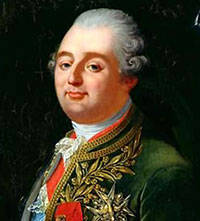 mt-DNA haplogroup N1b and Y-DNA haplogroup G2a respectively. The first is more common in Central Eurasia and Eastern Europe while the second haplogroup is also quite rare in today's France, and it's somewhat more frequent in the eastern parts of Europe too (peaks in Caucasus). At least his patrilineal lineage could have originated from the Carolingian Franks. But the original Franks were Scythian, not Germanic nation. Based on such accounts of Scythian founders of certain Germanic as well as Celtic tribes, British historiography in the British Empire period such as Sharon Turner in his History of the Anglo-Saxons, made them the ancestors of the Anglo-Saxons.
mt-DNA haplogroup N1b and Y-DNA haplogroup G2a respectively. The first is more common in Central Eurasia and Eastern Europe while the second haplogroup is also quite rare in today's France, and it's somewhat more frequent in the eastern parts of Europe too (peaks in Caucasus). At least his patrilineal lineage could have originated from the Carolingian Franks. But the original Franks were Scythian, not Germanic nation. Based on such accounts of Scythian founders of certain Germanic as well as Celtic tribes, British historiography in the British Empire period such as Sharon Turner in his History of the Anglo-Saxons, made them the ancestors of the Anglo-Saxons.
Since the ancient Scythians were in turn originating from the Caspian steppes then king Louis' lineages could complicate things.
Are you a descendant of Genghis Khan?
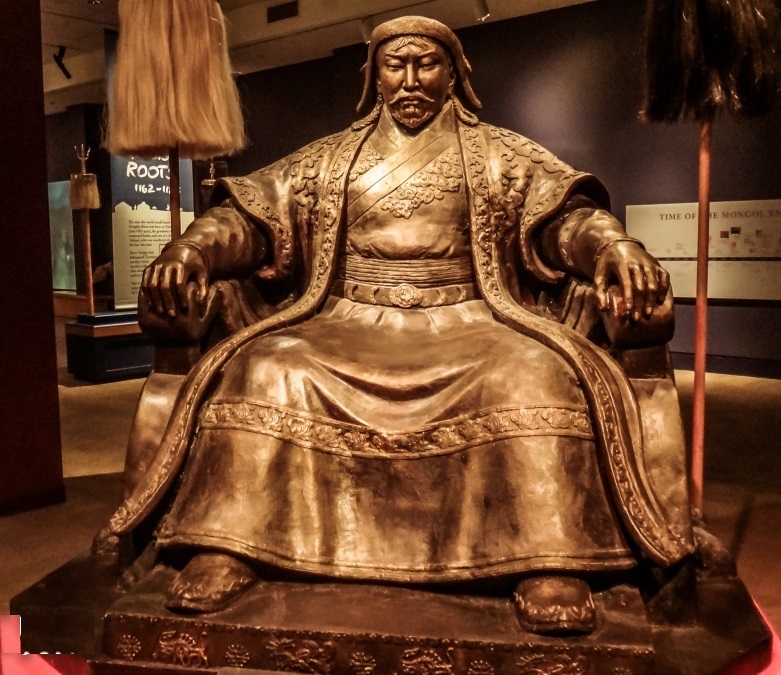
Geneticists from the University of Leicester have discovered that millions of modern Asian men are descended from 11 powerful dynastic leaders who lived up to 4,000 years ago — including Mongolian warlord Genghis Khan.
The study, which is funded by the Wellcome Trust and published in the journal European Journal of Human Genetics, examined the male-specific Y chromosome, which is passed from father to son, in more than 5,000 Asian men belonging to 127 populations.
Most Y-chromosome types are very rare, but the team discovered 11 types that were relatively common across the sample and studied their distributions and histories.
Two common male lineages have been discovered before, and have been ascribed to one well-known historical figure, Genghis Khan, and another less-known one, Giocangga. The Leicester team found genetic links via a chain of male ancestors to both Genghis Khan and Giocangga, in addition to nine other dynastic leaders who originated from throughout Asia and date back to between 2100 BC and 700 AD.
You’re related to Charlemagne?

You and every other living European…descendent of Charlemagne, who was crowned Emperor on December 25, 800, Carolingian King of the Franks, Holy Roman Emperor, the great European conciliator.
Charlemagne was called Charles I and Charles the Great. He was King of the Franks (768-814), King of the Lombards (774-814) and Emperor of the of the Holy Roman Empire (800-814). He was crowned Emperor by Pope Leo III on 25 December 800. As king of the Franks, Charlemagne conquered the Lombard kingdom in Italy, subdued the Saxons, annexed Bavaria to his kingdom, fought campaigns in Spain and Hungary, and except for the Kingdom of Asturias in Spain, southern Italy and the British Isles, united in one super state practically all the Christian lands of western Europe.
He is regarded as Charles I of the Holy Roman Empire, as well as Charles I of France. Besides expanding its political power, he also brought about a cultural renaissance in his empire. Although this imperium survived its founder by only one generation, the medieval kingdoms of France and Germany derived all their constitutional traditions from Charles's monarchy. Throughout medieval Europe, Charlemagne was considered the prototype of a Christian king and emperor. His descendants are numerous and members of the Society of Charlemagne Ancestry celebrate and honor their heritage to this great monarch.
The most recent common ancestor of every European today (except for recent immigrants to the Continent) was someone who lived in Europe in the surprisingly recent past—only about 600 years ago. In other words, all Europeans alive today have among their ancestors the same man or woman who lived around 1400. Before that date, the number of ancestor’s common to all Europeans today increased, until, about a thousand years ago, a peculiar situation prevailed: 20 percent of the adult Europeans alive in 1000 would turn out to be the ancestors of no one living today (that is, they had no children or all their descendants eventually died childless); each of the remaining 80 percent would turn out to be a direct ancestor of every European living today.
When you go back 40 generations, and you have roughly a trillion ancestors—more than the number of people who existed at the time Charlemagne lived. (Virtually all family trees have consanguineous marriages, so the same person will appear in multiple places in a tree.)
Biologically we all have two parents, four grandparents, eight grandparents, and so on. If a person traces her ancestry back to the time of the emperor Charlemagne she will have a quadrillion ancestor—more ancestors than there were people on the planet at the time. This happens because our family trees aren’t distinct—they are muddled up. Some people will be related to Cleopatra or Charlemagne many more times over than others, but fundamentally we are all related. As Jon Marks, professor of anthropology at UNC-Charlotte said “Every ancestor had two parents, and when you go that many generations back, our ideas of ancestry simply break down. It’s genetic homeopathy, an effectively infinite dilution of DNA.”
Similarities between Charlemagne and Genghis Khan
There are many similarities between Genghis Khan and Charlemagne, which are striking: Both men have unified their empire and can't decide on a successor among their sons. Both divide the empire up into three parts and give each part for their sons to reign over as equals. In both one of the sons gets worked out of his share. For both men historians do not exactly know how they died with rumors from the consequences of a Hunt, fall from a Horse or even a lung disease: pneumonia.
Genghis Khan is by contemporary history regarded as the founder of the Chinese empire, but Anatoly Fomenko makes a very good case in showing that Genghis Khan or Batu-Khan was in fact the founder of the Russian Horde.
Who has more living descendants today: Genghis Khan or Charlemagne?
Charlemagne. He had a four-hundred-year head start, as his first child was born in 765 and Genghis Khan?s first child was born in 1181. That is 14 generations, so, if all other things were equal, Charlemagne would have 214214= 16,384 times more descendants.
Of course, all other things are not equal. We can think of the growth of descent groups is governed by three factors?1. number of descendants in the first few generations, 2. geographic spread of the population, 3. level of exogamy within the geographies where the descent group spreads.
Genghis? descent group has the advantage in the first factor. Charlemagne?s descent group has the advantage in the latter two.
1. Number of descendants in the initial generations: Genghis Khan?s descent certainly spread quickly. His reputation for this has been bolstered by genetic studies?often misunderstood and exaggerated in the popular science press?showing a Y-chromosome haplotype that may be his being widespread throughout Central Asia. The numbers usually come from 15 year old research that focuses only on male lines?his sons? sons? sons? ? sons? sons : 8% of the men of Central Asia; so 0.5% of the world?s men. The exclusion of lines that go through women has consequences for Genghis? overall descent numbers that will be noted before. Then again, that haplogroup may not be Genghis?s at all. We do not have his DNA, and there is convincing counter-evidence that the haplotype has another source. Widespread Y-chromosomes are common in Central Asia (and throughout the continent) and stem from both historic and prehistoric population expansions. After the initial expansion, descendants of Genghis Khan were the upper classes of many of the lands of the former empire? but only really the male line descendants with power.
For Central Asia, the 8% number may be too low when we are thinking about the genealogical impact on the whole population, as we are forgetting the population impact of sons? sons? sons? ? sons? daughters, sons? sons? sons? ? daughters? sons, and millions of other descent lines that are not purely male. These will tend to expand more rapidly in populations where they have a greater concentration?so all Kazakhs, say, may be descended from Genghis Khan. On the other hand, 8% for male line descents may be too high, even if Zerjal et al.?s conclusions were correct, as it ignores that some of the people carrying the Y-chromosome may be Genghis Khan?s father?s father?s father?s ? brothers? sons? sons? ? sons? sons.
Whether Genghis Khan?s Y-chromosome lineage is the C3c-M48 cluster identified by Zerjal et al. in 2003 or the R1b-M343 haplogroup identified by Lkhagvasuren, et al. in 2016, or some other unidentified lineage, it is extremely concentrated in Central Asia?Mongolia, Kazakhstan, Kyrgyzstan, Uzbekistan, and not far outside. Sure, descent radiates rapidly, but the relative lack of these Y-chromosomes in places peripheral to the Mongol Empire like European Russia, or in central, high-population regions like South China, shows that the impact will be high, but not as high as Charlemagne?s.
Why?
2. geographic spread of the population, and 3. level of exogamy within the geographies where the descent group spreads.
The European royal and noble descendants of Charlemagne diffused rapidly into the European populations of all classes, due to the feudal structure of Europe from the 8th to 15th centuries, became widespread throughout ?the West,? and were at near full population level by the time of 17th - 19th century European settlement of the Americas. Following mathematical models, we can conclude that
?20 percent of the adult Europeans alive in 1000 would turn out to be the ancestors of no one living today (that is, they had no children or all their descendants eventually died childless); each of the remaining 80 percent would turn out to be a direct ancestor of every European living today.? (Chang)
Charlemagne?s descendants in 1000 are clearly in the former category.
Why aren?t Genghis?s descendants in 1400? Partially the head start in time, partially because after the first generations, Genghis?s descendants were more endogamous?they married in-group.
Medieval European kings had numbers illegitimate descendants that rivaled the Mongols??and they were geographically distributed through a larger sedentary population. What?s more, younger legitimate children of monarchs often married down into the nobility, younger legitimate children of nobles into the lower nobility, and younger legitimate children of lower nobility into the landed gentry. Essentially, 30 generations after Charlemagne in 1500, the middle classes and a lot of peasantry would have had minor amounts of ?royal descent,? nearly all of which could be traceable back to Charlemagne. This is the ?high level of exogamy (group out-marriage)? needed to make someone?s descent nearly global. While Genghis Khan?s descendants may have had this in Central Asia, it did not disperse out in an even manner in the now billion-strong populations of Han Chinese or South Asians.
In the case of China, Mongol descendants either intermarried with Manchu banners or were endogamous, with illegitimate descendants remaining concentrated around Beijing, making no impact in South China. In the case of South Asia, religious and caste endogamy (group in-marriage) limited Genghisid/Timurid descents largely to certain clans of Muslims. The Mughals, for instance, did not typically marry their daughters (by the sultana or by women of the harem) outside of the group. Nothing could have been further from the case within Europe.
This makes Charlemagne the ancestor of (perhaps) all Europeans who have even a little long-term European ancestry: maybe 750 million, all North and South Americans, Oceanians, and others around the world who have even a tiny bit of European ancestry (such as one guy in the year 1730)?maybe another 1.5 billion. Genghis Khan may have a billion?and will be catching up soon.
SO,YOU HAVE ROYAL BLOOD?
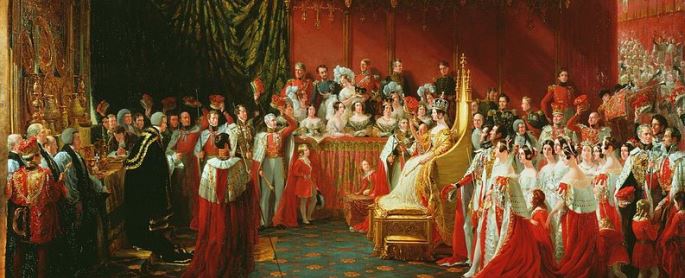
It?s not as uncommon as you might imagine. Lots of kings and queens of centuries past had many children. These children married into noble families. As the centuries wore on, only the older children of these royal children and grandchildren would marry into the top noble families. The younger ones would marry minor nobles, knights, or commoner heiresses. Eventually, some lines of a royal family married down so much that they were no longer royal at all. This does not mean the descendants of the kings and queens of old do not have royal blood flowing through their veins to this day.
It is exceptionally common for families to have stories of noble descent, working for nobility, etc. Almost all of them are incorrect. People often aggrandize their family background or they fabricate stories. Other times, extracts of truths from different stories are combined and passed from generation to generation as the truth.
If you really believe you have noble ancestry, then you must prove it. Do genealogical research on the ancestral line from which the story came and keep going back until you reach nobility or you don't. If you really have a noble ancestor, the evidence and documentation will likely exist.
While many people have royal lines, it can be challenging to prove it because for most of us it means going back quite a way in time, through periods where the records can be a bit sparse. For those fortunate enough to tie into a royal or noble lineage, there are many publications like those included in this collection that can help. Most of the collections in this category are published books and can be browsed. Be sure to read introductory materials to get the most from them.
If your ancestor had noble or royal lineage, you may find a published genealogy within this category, as well as heraldry and coats of arms.
Some publications include images of armorial bearings as well as descriptions and family history information.
You can use this kind of genetic information to make some genealogical inferences, but you should know what you?re dealing with. Your DNA is not a carbon copy of your parents?. Each time they made eggs or sperm, they shuffled the two copies of each of their chromosomes and put one in the cell. Just as a new deck gets more scrambled the more times you shuffle it, chromosomes get more shuffled from one generation to the next.
This means that if you compare two people?s DNA, you will find some chunks that are identical in sequence. The more closely related people are, the bigger the chunks you?ll find. This diagram shows how two first cousins share a piece of DNA that?s identical by descent (IBD for short).
The idea of being a ?direct descendant? is about the genetic ties our society values for purposes of inheritance and social status. Adorable though he is, Prince George isn?t a genetically superior candidate for King of England than his older cousins are. But he happens to be the eldest son of the eldest son and is now third in line to the throne. Genetically you?re not a more direct descendant of a celebrated historical figure if you happen to have inherited their title through dynastic succession than if your ancestor was raped by that same person. Culturally, however, we prize the former relationship over the latter to maintain a certain kind of social order.
While not everyone will find a royal ancestor in their family tree, enough do to mean many lineage societies now exist to welcome these long-lost royal heirs. If you are descended from an ancient king or queen, or even a more modern one, and you know it and can prove it with documentation that connects each generation to the next, you can join one or more of these royal lineage societies (depending on which king or queen from which you are descended).
Don't Get Too Excited If a DNA Test Says You Have Royal Ancestors
As exciting as it is to find out you?re the direct descendant of an old royal line, but being related to long-ago kings doesn?t make you royal or noble.
When it comes to ancestry, DNA is very good at determining close family relations such as siblings or parents, and dozens of stories are emerging that reunite or identify lost close family members (or indeed criminals). For deeper family roots, these tests do not really tell you where your ancestors came from. They say where DNA like yours can be found on Earth today. By inference, we are to assume that significant proportions of our deep family came from those places. But to say that you are 20 percent Irish, 4 percent Native American or 12 percent Scandinavian is fun, trivial and has very little scientific meaning.
We all
have thousands of ancestors, and our family trees become matted webs as we go
back in time, which means that before long, our ancestors become everyone?s
ancestors. Humankind is fascinatingly closely related, and DNA will tell you
little about your culture, history and identity.
A genealogical DNA test is a DNA-based test which looks at specific locations of a person's genome, in order to find or verify ancestral genealogical relationships or (with lower reliability) to estimate the ethnic mixture of an individual. Since different testing companies use different ethnic reference groups, consisting of now living test persons with unknown pre-census time origins, the estimated ethnic mix is contradictory among companies. Genealogical DNA tests are not designed to give extensive information about medical conditions or diseases.
Y-DNA haplotypes from genealogical DNA tests
Unlike other chromosomes, Y-chromosomes generally do not come in pairs. Every human male (excepting those with XYY syndrome) has only one copy of that chromosome. This means that there is not any chance variation of which copy is inherited, and (for most of the chromosome) not any shuffling between copies by recombination; so, unlike autosomal haplotypes, there is effectively not any randomization of the Y-chromosome haplotype between generations. A human male should largely share the same Y chromosome as his father, give or take a few mutations; thus, Y-chromosomes tend to pass largely intact from father to son, with a small but accumulating number of mutations that can serve to differentiate male lineages. In particular, the Y-DNA represented as the numbered results of a Y-DNA genealogical DNA test should match, except for mutations.
Since a company can match people only to relatives in its customer base, so if you wanted to find as many relatives as possible, you would need to use multiple companies such as Living DNA, Family Tree DNA, 23andMe, Geno 2.0 and AncestryDNA. These companies analyze hundreds of thousands of natural DNA spelling variations called single nucleotide polymorphisms, or SNPs. To estimate ethnic makeup, a company compares your overall SNP pattern with those of people from around the world. SNP matches also help companies see whom in their database you are related to.
Some of the companies also analyze a person’s Y chromosome or mitochondrial DNA. Y chromosome DNA traces a man’s paternal line. In contrast, mitochondrial DNA traces maternal heritage, since people inherit mitochondria, which generate energy for cells, only from their mothers. Neither type of DNA changes that much over time, so those tests usually cannot tell you much about recent ancestors.
How can consumers be sure a genetic test is valid and useful?
The validity of a DNA test depends on two parameters: if the test can correctly detect the absence or presence of a factor or genetic factors that, on the other hand, have been correlated with the predisposition to develop a disease. Clinical usefulness refers to whether the genetic analysis that is marketed can really offer beneficial and beneficial information for the consumer, in order to maintain healthier habits. Not all DNA tests that are sold are certified by the authorities, which supports the need to interpret their conclusions with caution.
Most of the time, genetic testing is done through healthcare providers such as physicians, nurse practitioners, and genetic counselors. Healthcare providers determine which test is needed, order the test from a laboratory, collect and send the DNA sample, interpret the test results, and share the results with the patient. Often, a health insurance company covers part or all of the cost of testing.
Direct-to-consumer genetic testing is different: these genetic tests are marketed directly to customers via television, print advertisements, or the Internet, and the tests can be bought online or in stores. Customers send the company a DNA sample and receive their results directly from a secure website or in a written report. Direct-to-consumer genetic testing provides people access to their genetic information without necessarily involving a healthcare provider or health insurance company in the process.
Dozens of companies currently offer direct-to-consumer genetic tests for a variety of purposes. The most popular tests use genetic variations to make predictions about health, provide information about common traits, and offer clues about a person’s ancestry. The number of companies providing direct-to-consumer genetic testing is growing, along with the range of health conditions and traits covered by these tests. Because there is currently little regulation of direct-to-consumer genetic testing services, it is important to assess the quality of available services before pursuing any testing.
Other names for direct-to-consumer genetic testing include DTC genetic testing, direct-access genetic testing, at-home genetic testing, and home DNA testing. Ancestry testing (also called genealogy testing) is also considered a form of direct-to-consumer genetic testing.
Before undergoing genetic testing
Before undergoing genetic testing, it is important to be sure that the test is valid and useful. A genetic test is valid if it provides an accurate result. Two main measures of accuracy apply to genetic tests: analytical validity and clinical validity. Another measure of the quality of a genetic test is its usefulness, or clinical utility.
- Analytical validity refers to how well the test predicts the presence or absence of a particular gene or genetic change. In other words, can the test accurately detect whether a specific genetic variant is present or absent?
- Clinical validity refers to how well the genetic variant being analyzed is related to the presence, absence, or risk of a specific disease.
- Clinical utility refers to whether the test can provide information about diagnosis, treatment, management, or prevention of a disease that will be helpful to a consumer.
All laboratories that perform health-related testing, including genetic testing, are subject to federal regulatory standards called the Clinical Laboratory Improvement Amendments (CLIA) or even stricter state requirements. CLIA standards cover how tests are performed, the qualifications of laboratory personnel, and quality control and testing procedures for each laboratory. By controlling the quality of laboratory practices, CLIA standards are designed to ensure the analytical validity of genetic tests.
CLIA standards do not address the clinical validity or clinical utility of genetic tests. The Food and Drug Administration (FDA) requires information about clinical validity for some genetic tests. Additionally, the state of New York requires information on clinical validity for all laboratory tests performed for people living in that state. Consumers, health providers, and health insurance companies are often the ones who determine the clinical utility of a genetic test.
It can be difficult to determine the quality of a genetic test sold directly to the public. Some providers of direct-to-consumer genetic tests are not CLIA-certified, so it can be difficult to tell whether their tests are valid. If providers of direct-to-consumer genetic tests offer easy-to-understand information about the scientific basis of their tests, it can help consumers make more informed decisions. It may also be helpful to discuss any concerns with a health professional before ordering a direct-to-consumer genetic test.

